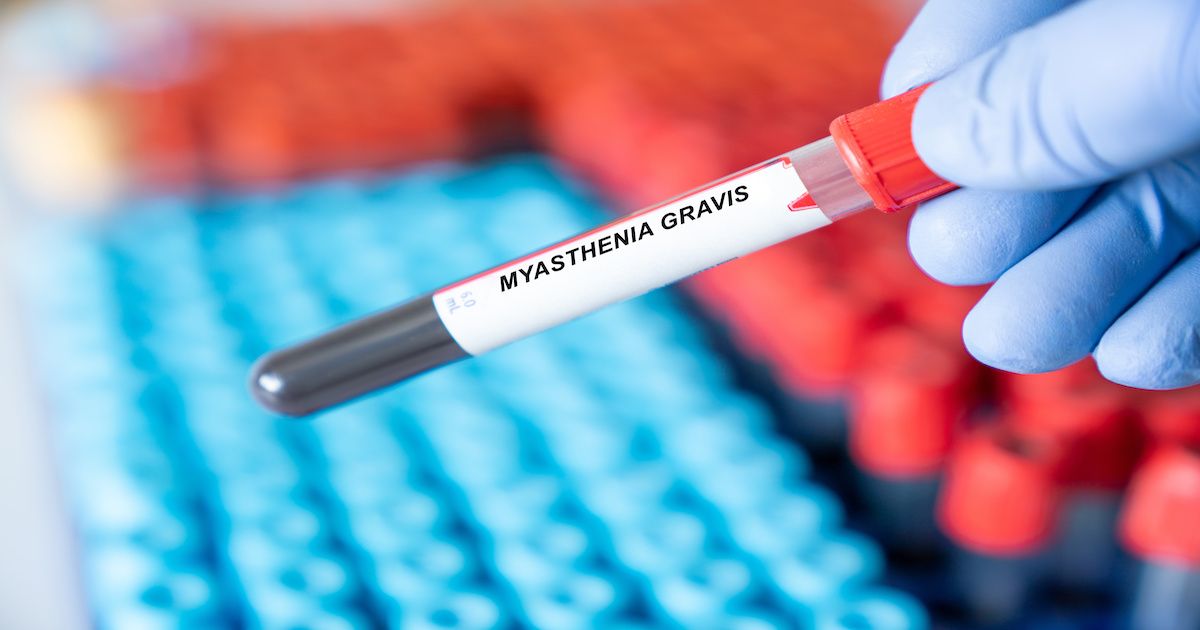- Center on Health Equity & Access
- Clinical
- Health Care Cost
- Health Care Delivery
- Insurance
- Policy
- Technology
- Value-Based Care
New Data on Batoclimab for MG Indicate Effective Treatment Potential
Two doses of batoclimab were evaluated for their effectiveness in patients with generalized myasthenia gravis (MG) who were seropositive.
Batoclimab should continue to be investigated for use in patients who have generalized myasthenia gravis (MG) and are seropositive for anti–acetylcholine receptor (AChR) antibodies, following new research that shows the fully human anti–neonatal Fc receptor (FcRn) monoclonal antibody is safe, effective, and produced meaningful clinical benefits.
A new phase 2a, proof-of-concept, randomized, double-blind, placebo-controlled study (NCT03863080) published in Annals of Clinical and Translational Neurology investigated 6 weeks of once-weekly injections of 340- and 680-mg subcutaneous of batoclimab vs matching placebo.1,2 Both measured at 6 weeks post baseline, primary end points were safety, tolerability, and change in total immunoglobulin G (IgG), IgG subclasses, and anti-AChR antibodies, and secondary end points were changes in 4 scores: Myasthenia Gravis Activities of Daily Living (MG-ADL), Quantitative Myasthenia Gravis (QMG), Myasthenia Gravis Composite (MGC), and revised 15-item Myasthenia Gravis Quality of Life scores.
Myasthenia gravis blood test
Image credit: luchschenF - stocka.adobe.com

The study population encompassed 6 patients who received 680-mg batoclimab, 5 patients who received 340-mg batoclimab, and 6 patients who received placebo. There was also an optional open-label extension (OLE) study in which all patients would receive 340-mg batoclimab every 2 weeks for 6 weeks and then were followed for 6 more weeks without treatment; those who did not enter the OLE study were followed for 12 treatment-free weeks after their final dose.
“In patients with MG, anti-FcRn therapy is expected to lead to a significant reduction in the levels of various pathogenic IgG, including the anti-AChR-IgG and the anti-muscle-specific tyrosine kinase (MuSK)-IgG,” the study authors wrote, “both of which have been identified as drivers of disease pathology in various subtypes of MG.”
Overall, 12 patients completed all 3 study periods. Those in the placebo arm were younger, at a mean (SD) age of 41.0 (15.4) years at trial enrollment vs 64.5 (18.8) years in the investigational arms, and time since MG symptom onset was 7.5 (5.6) vs 5.3 (4.4) years, respectively. More patients in the batoclimab arms were male patients (72.7% vs 33.3%), and all were White, non-Hispanic Latino (for those who reported that information).
The most common treatment histories were prior/concomitant acetylcholinesterase inhibitor (88.2%), prednisone (64.7%), and nonsteroidal immunosuppression (52.9%).
Regarding safety, the frequencies of adverse events (AEs) were balanced among the 3 arms in the double-blind phase. Eighty percent or more in each group report an AE. And of those who reported a treatment-emergent AE (TEAE), all were grade 1/2. There was only 1 serious AE reported in the batoclimab 680-mg group, and only 1 AE (herpes simplex infection) that led to treatment discontinuation, also in the 680-mg group. Two AEs overall were reported in the 680-mg group (decreased appetite, viral upper respiratory tract infection), 4 in the 340-mg group (increased red blood cell count, muscle spasms, urinary tract infection, pyuria), and 5 in the placebo group (headache [2], constipation, decreased complement activity, diarrhea). The 340-mg group had the most reported injection-site reactions, at 4. In the OLE study, an AE was reported by 7 patients in the batoclimab group vs 6 in the placebo group.
Mean reductions in serum albumin were seen at week 4 in the batoclimab 680-mg group and week 5 in the 340-mg group: –12.0 (2.6) g/L and –11.2 (3.4) g/L, respectively. These returned to baseline levels by the end of the follow-up period.
Significant differences were also see in serum IgG concentrations (P < .0001) among those who received batoclimab vs placebo, respectively, in the double-blind phase: –70.0%(95% CI, –76.7% to –63.2%) vs –3.2% (95% CI, –9.0% to 2.7%). For the OLE study, IgG levels also dropped following batoclimab before trending up in that phase’s 6-week follow-up—although not to baseline levels.
For the secondary end point scores, results show no observable difference in quality of life change among the 3 study arms, while the mean changes seen in the MG-ADL, QMG, and MGC were deemed not statistically significant vs placebo:
- MG-ADL: –3.8 (5.2) vs –2.0 (3.0)
- QMG: –3.9 (5.6) vs –1.8 (3.3)
- MGC: –8.0 (7.7) vs –0.8 (7.3)
Although the study authors noted several limitations on generalizability of their findings—small study population, younger age of those receiving batoclimab, difference in time since symptom onset, heterogeneous patient population, and short treatment duration—they believe their findings still hold merit.
“The results of this phase 2a trial demonstrated that subcutaneous batoclimab is well tolerated and significantly reduced IgG and anti-AChR antibody levels in patients with generalized MG,” they concluded, “supporting its further investigation as a potential patient-administered therapeutic agent for MG.”
References
- A study of RVT-14-1 in myasthenia gravis (MG patients). ClinicalTrials.gov. Updated October 8, 2021. Accessed December 15, 2023. https://clinicaltrials.gov/study/NCT03863080
- Nowak RJ, Breiner A, Bril V, et al. Subcutaneous batoclimab in generalized myasthenia gravis: results from a phase 2a trial with an open-label extension. Ann Clin Transl Neurol. Published online December 7, 2023. doi:10.1002/acn3.51946
